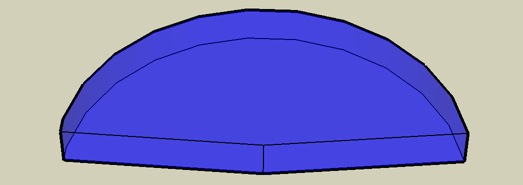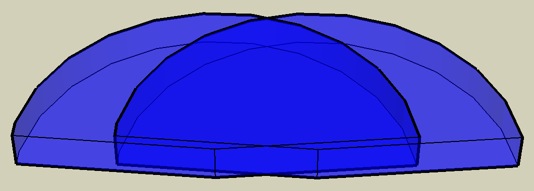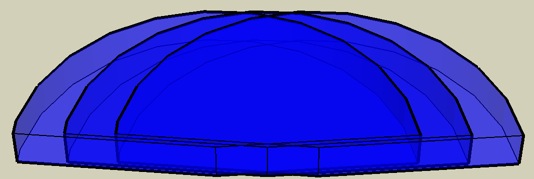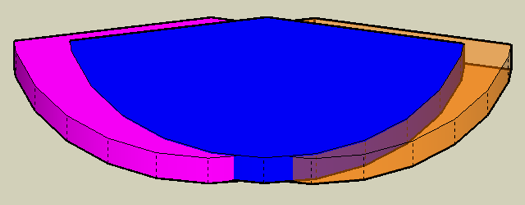Two L1®s in the Same Sound Field
Here are some sketches for discussion purposes. The sound field does not stop abruptly, as might be interpreted by viewing these diagrams. It should continue, fading off gradually, well beyond what is shown here.
These are extremely conservative, and your real-life performance will exceed what is suggested here. We are looking at the relative performance between one L1®. and two.
The view is from behind the wall behind the L1 systems.
Single L1® mono
Two L1®s twenty feet apart — Dual Mono
The darker blue area represents the area where the two sound fields overlap.
Notes:
- Running two L1®s does not project farther forward than one.
- Dual Mono is not recommended.
When you run stereo instead of dual-mono the stereo "sweet-spot" will be extremely wide. You don't have to be between the loudspeakers to hear both Left and Right channels.
Two L1®s with the original single L1®s field superimposed
The dark blue area shows the sound field of the original L1™. The lighter area shows the extra coverage you get by having two L1™s 20 feet apart as compared to a single L1™
The extra coverage you get with two L1®s spaced 20 feet apart, is about 10 feet on either side of the sound field of a single L1®s.
- The view from the other side[/b]
(Still very conservative projections)
Blue is the coverage with one L1™. Purple and Orange is the extra coverage that you might get with two L1™s 20 feet apart.
Note: The sound field does not stop abruptly, as might be interpreted by viewing these diagrams. It should continue, fading off gradually, well beyond what is shown here. The purpose of these diagrams is to consider the relative advantages of having two L1®s in dual mono mode compared to a single L1®.



